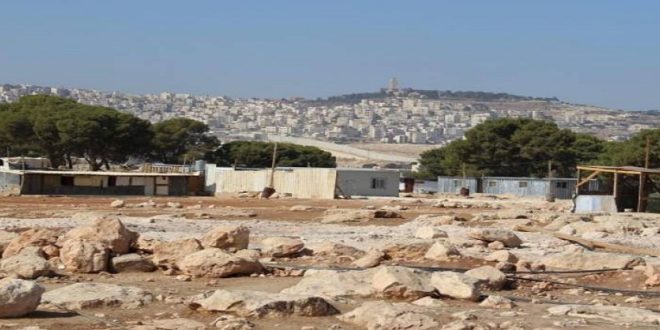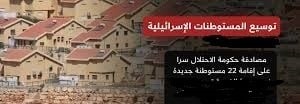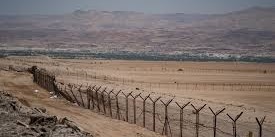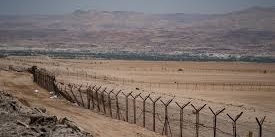By: Madeeha Araj
The Israeli government continues supporting settlement project in the occupied Palestinian territories as it allocated additional budgets for the establishment of settlement farms in the Efrat and Gevaa Binyamin settlements built on Palestinian land, while the Israeli Ministry of Education has allocated additional budgets for ecology studies in the settlements as the Israeli government transferred NIS 992,000 to the settlement farm.
Earlier this week, Israeli sources revealed that Yossi Lopt, a former official in the so-called Israeli Civil Administration, had announced that the settlement bloc Gush Katif had is a State land, thus established an “illegal” settlement in on it between 2013 – 2014, it extends on an area of 250 dunums and includes several buildings and there surrounded by 17,000 dunums of land in Bethlehem.
The Israeli Ministry of Housing and Construction published a tender for the construction of 459 housing units in the settlement of Ma’aleh Adumim as part of the “Housing Discounted” project. According to the tender, the buildings will be built in five different plots. Netanyahu is in contact with the Mayor of Ma’aleh Adumim has personally informed him the approval of the construction of 459 housing units. The highest-priced project in Israel is expected to be built in the Givat Ze’ev settlement this year. The project includes the construction of 450 housing units, ranging from 250 to 450 square meters, The initial value of the residential unit is NIS 6.5 million, and the total investment in the project is NIS 750 million of which 160 million invested in development.
The occupation authorities are also considering a plan to double the size of the settlement of Har Gilo in a way that isolates the Palestinian village of Walaja and leads to the seizure of vast areas of its land to expand Har Gilo. The plan includes the construction of 330 new housing units, public institutions, fuel station, gardens and others.
In the Salfit Governorate, the Israeli occupation forces continued to raze the settlement in Wadi Qana west of the Deir Istia town, despite being a nature reserve. According to the Civil Administration, the confiscated area is 59 dunums for the construction of 108 new settlement units. Residents of Dher Istia was informed that 3 basins known as Basin No. 9, 12, and 13 are targeted for confiscation.
Within the contest of crimes committed by extremist settlers in Hebron have cut off dozens of fruit trees in the Khallet al-Natsh area near the settlement of Kiryat Arba, and wrote hostile slogans in the area. Moreover, to the east of Hebron, Israeli occupation forces repressed a protest against the seizure of more than 20 donums in the Bani Naim town in the Hamra area in order to expand the settlement of “Bani Hefer.” On the other hand, the Israeli Minister of Economy and Industry, Eli Cohen, broke into the Ibrahimi Mosque in Hebron under the protection of the occupation forces, amid strict security procedures, and prevented citizens from reaching there.
The National Bureau for the Defense of Land and Resistance of Settlement, welcomed the adoption by the World Heritage Committee of the United Nations Educational, Scientific and Cultural Organization – UNESCO at its 42nd meeting in the Bahraini capital, Manama, the two important resolutions on the cities of Jerusalem and Hebron unanimously agreed by the 21 members of the World Heritage Committee. The resolutions call for the cessation of violations that would change the character of the city. The occupation authorities tried to drop the two resolutions, but failed. Thus, the National Bureau considers this vote as a victory for Palestine in light of settlement escalation, and in conjunction with the fierce aggression against the Islamic and Christian sanctities and the confiscation of our land.
ِ
A list of Israeli Occupation and Settlers’ Assaults over the Last Week, Documented by the National Bureau:
Jerusalem:
- Forcing the citizen, Asaad Shweiki from Silwan to demolish his house under the pretext of building without a permit. He was forced to demolish his house to avoid paying fines, instead of the demolition fee that ranged from NIS 50-60,000. Ibrahim Amira also demolished his house in the town of Sur Baher under the same pretext.
- Bulldozing agricultural land belonging to Ibrahim Salim, Ghaleb Salem, Moh’d al-Sayyuri, Moh’d Fayez and Moh’d Askar.
- Demolishing a 100- m iron fence in al-Hardub neighborhood in Al-Tur, east of Jerusalem under the pretext of not being licensed, and a parking belonging to Iyad Ramadan in the Wadi Hilweh neighborhood, in the town of Silwan, under the same pretext. Moreover, demolishing a house in the Beit Hanina neighborhood north of occupied Jerusalem, and a three-storey residential building in the village of Al-Isawiya, northeast of occupied Jerusalem.
Hebron:
- Erecting a passenger station in the Tel Armeida neighborhood in the center of Hebron, in preparation for the seizure of a plot owned by the Abu Eisha family. The station is located on the main road leading to the Beit Yishai settlement.
Ramallah:
- Invading the Deir Jarir village, east of Ramallah, and cutting down a number of olive trees, and setting fire to approximately 120 donums isolated behind the Apartheid Wall from the village of Safa west of Ramallah, 60 donums of which are planted with olives.
Bethlehem:
- Notification to stop building in 3 houses in the town of Nahhalin, west of Bethlehem, belonging to, Ali Abdul Hafez Shakarna, 80 square meters, Yusuf Abdul Rahman Fannoun 120 square meters and Basel Hussein Shakarna 90 square meters.
- Uprooting of 20 trees from the lands of Al-Khader town and the theft of 3 barbed-wire fence, and destroying part of the retaining walls.
Salfeet:
- Shrinking of pastoral areas in the town of Bruqin due to the settlement expansion of the “Ariel” and “Borqan”
- Invading the town of Kifl Hares and releasing pigs in the town, villagers of Qarawat Bani Hassan called on their mayor to get rid of them.
Nablus:
- Setting fire to olive fields in the town of Beit Furik, east of Nablus. According to the sources of the National Bureau, a group of settlers under the protection of the Israeli occupation forces set fire to the olive fields located in Jabal al-Shararbeh, south of the town, near the settlement of Itamar, where fire broke out in three locations and resulted in destroying trees.
- Burning more than 300 olive trees in the Tal village, west of Nablus, belonging to Fathi al-Hassan and Mousi al-Shartuk.
- Broking into Yosif tomb to perform a Talmudic ritual, under heavy guard of the Israeli occupation forces, and wrote racist slogansl, and damaged the tires of two vehicles in the Urif village.
Jordan Valley:
- Forcing Palestinian families living in the northern Jordan Valley, Hamsa al-Fawqa area to vacate their homes for military training.
- Invading Um al-Jamal area in the northern Jordan Valley, searched the tents of the citizens and destroyed them.
 المكتب الوطني للدفاع عن الارض ومقاومة الاستيطان منظمة التحرير الفلسطينية
المكتب الوطني للدفاع عن الارض ومقاومة الاستيطان منظمة التحرير الفلسطينية




